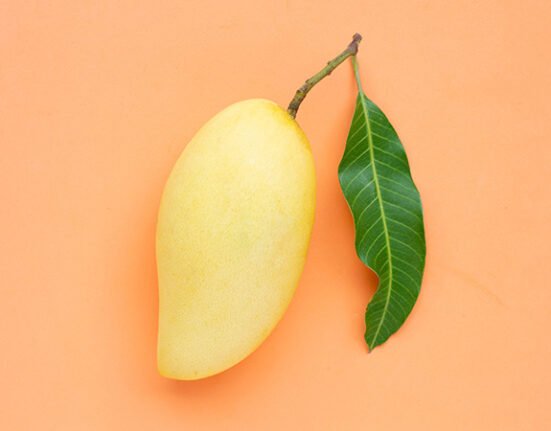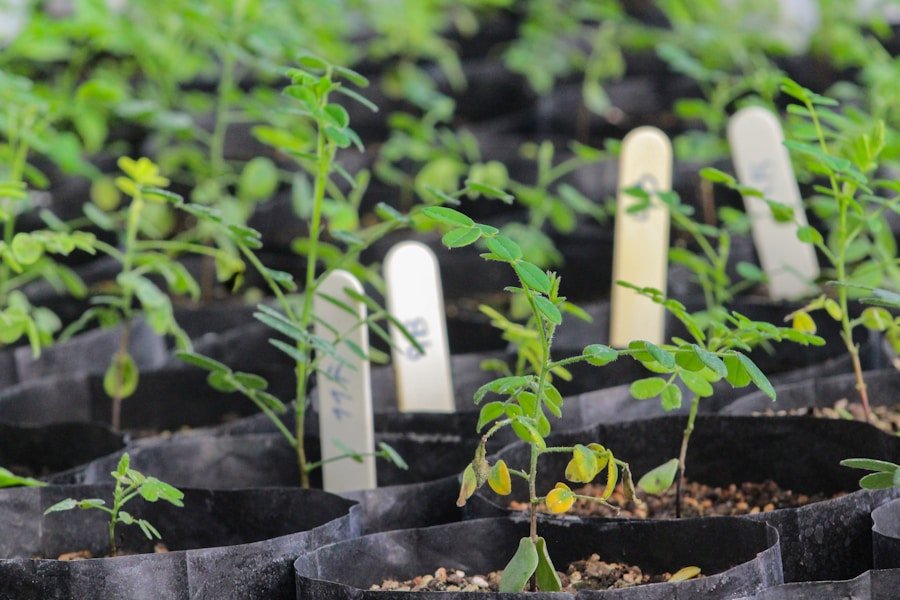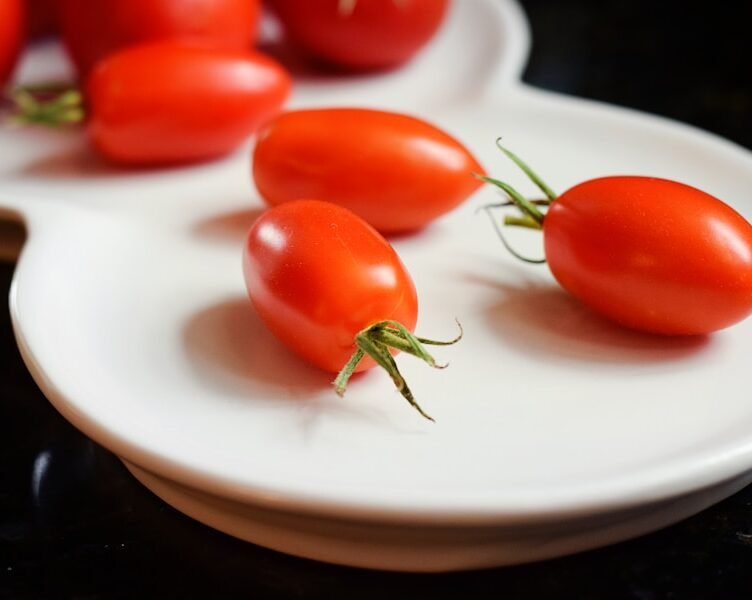Cultivating a kitchen garden indoors offers a rewarding and sustainable means of accessing fresh produce year-round. This approach provides the convenience of having fresh herbs, fruits, and vegetables readily available, while also enabling individuals to exert control over the quality and safety of their food. This article will delve into the advantages of indoor kitchen gardening, guide readers in selecting suitable plants, offer practical advice on setup and maintenance, and explore innovative ways to incorporate homegrown produce into cooking.
Additionally, it will address common challenges associated with indoor gardening, provide strategies for optimizing space, and discuss sustainable practices essential for achieving success in indoor kitchen gardening.
Key Takeaways
- Growing a kitchen garden indoors allows for easy access to fresh herbs and produce for cooking
- Choose plants that thrive in indoor environments, such as herbs, leafy greens, and small vegetables
- Set up and maintain your indoor kitchen garden by providing proper lighting, watering, and ventilation
- Use homegrown produce in creative ways, such as making herb-infused oils or using fresh vegetables in salads and stir-fries
- Overcome challenges of indoor gardening by addressing issues like pests, limited space, and proper plant care
Benefits of Growing a Kitchen Garden Indoors
Fresh Produce Year-Round
Having an indoor kitchen garden allows you to access fresh produce 365 days a year, regardless of the weather outside. This means you can enjoy fresh herbs, fruits, and vegetables even during the winter months when outdoor gardening is not possible.
Healthier and More Nutritious Harvest
Growing your own food indoors gives you complete control over the growing conditions, ensuring that no harmful chemicals or pesticides are used. This leads to a healthier and more nutritious harvest. Moreover, indoor gardening can be a therapeutic and stress-relieving activity, providing a sense of accomplishment and satisfaction as you watch your plants grow and thrive.
Cost Savings and Sustainability
Another significant advantage of growing a kitchen garden indoors is the cost savings it provides. By growing your own produce, you can significantly reduce your grocery bill and save money in the long run. Additionally, indoor gardening helps reduce food waste, as you can harvest only what you need for each meal, minimizing the risk of produce going bad before it is used. Overall, growing a kitchen garden indoors leads to a more sustainable and environmentally friendly way of living.
Choosing the Right Plants for Your Indoor Kitchen Garden
When choosing plants for your indoor kitchen garden, it is important to consider the space and lighting conditions available. Herbs such as basil, mint, and parsley are great options for indoor gardening as they require minimal space and can thrive in low light conditions. Additionally, leafy greens like lettuce, spinach, and kale are also well-suited for indoor growing and can be easily incorporated into your daily meals.
Fruits such as strawberries and tomatoes can also be grown indoors, provided that they receive enough sunlight and are given proper support for their growth. It is important to research the specific requirements of each plant before deciding which ones to grow in your indoor garden. Consider factors such as temperature, humidity, and watering needs to ensure that your plants will thrive in their indoor environment.
By choosing the right plants for your indoor kitchen garden, you can set yourself up for a successful and bountiful harvest.
Tips for Setting Up and Maintaining an Indoor Kitchen Garden
| Plant | Days to Harvest | Light Requirements | Watering Frequency |
|---|---|---|---|
| Basil | 60-90 days | 6-8 hours of sunlight | Regularly, when soil is dry to the touch |
| Tomatoes | 60-85 days | 6-8 hours of direct sunlight | Regularly, when soil is dry 1-2 inches deep |
| Spinach | 40-50 days | 4-6 hours of sunlight | Regularly, to keep soil consistently moist |
Setting up an indoor kitchen garden requires careful planning and consideration of the space available. Start by choosing a suitable location with access to natural light or invest in grow lights to provide the necessary light for your plants. Ensure that the area is well-ventilated and has proper drainage to prevent mold and mildew from developing.
Next, select containers that are appropriate for the size and needs of your plants. Consider using pots with drainage holes to prevent waterlogging and root rot. Use high-quality potting soil that is well-draining and nutrient-rich to provide a healthy growing environment for your plants.
It is also important to establish a regular watering schedule and monitor the moisture levels of the soil to prevent over or under-watering. Maintaining an indoor kitchen garden also involves regular pruning and harvesting to encourage healthy growth and prevent overcrowding. Keep an eye out for pests and diseases that may affect your plants and take prompt action to address any issues that arise.
By following these tips for setting up and maintaining an indoor kitchen garden, you can create a thriving and productive growing space in your home.
Creative Ways to Use Homegrown Produce in Your Cooking
Once you have successfully grown your own produce indoors, it’s time to get creative with how you use it in your cooking. Fresh herbs can be used to add flavor and aroma to a wide variety of dishes, from soups and salads to marinades and sauces. Experiment with different combinations of herbs to create unique and delicious flavor profiles in your meals.
Leafy greens such as lettuce and spinach can be used as the base for salads or added to sandwiches and wraps for an extra dose of nutrition. They can also be sautéed or steamed as a side dish or incorporated into pasta dishes and stir-fries. Fruits like strawberries and tomatoes can be enjoyed on their own or used in desserts, jams, salsas, and sauces.
By using homegrown produce in your cooking, you can elevate the flavor and nutritional value of your meals while also reducing your reliance on store-bought ingredients. This can lead to a greater sense of satisfaction and connection with the food you consume, knowing that it was grown with care and intention in your own home.
Overcoming Challenges of Indoor Gardening
Lighting Challenges
One common challenge is providing adequate light for plants that require high levels of sunlight. This can be overcome by investing in grow lights or placing plants near windows where they can receive natural light throughout the day.
Maintaining Humidity Levels
Another challenge of indoor gardening is maintaining proper humidity levels, especially during the winter months when indoor air tends to be dry. This can be addressed by using a humidifier or placing trays of water near plants to increase moisture levels in the air.
Pest Control and Monitoring
Additionally, pests such as aphids, spider mites, and fungus gnats can pose a threat to indoor plants and need to be monitored closely to prevent infestations. By being aware of these challenges and taking proactive measures to address them, you can ensure the success of your indoor kitchen garden and enjoy a bountiful harvest year-round.
Maximizing Space for Indoor Kitchen Gardening
In many homes, space is limited, making it important to maximize the available space for indoor kitchen gardening. Vertical gardening is a great way to make the most of limited space by utilizing walls or hanging planters to grow herbs, fruits, and vegetables. This not only saves space but also adds visual interest to your home.
Another way to maximize space for indoor gardening is by using multi-tiered shelving units or plant stands to create layers of growing space. This allows you to grow a larger variety of plants without taking up valuable floor space. Additionally, consider using windowsills, countertops, and even unused corners of your home to create small growing areas for herbs and small vegetables.
By thinking creatively about how to use the space in your home for indoor gardening, you can create a lush and productive growing environment that fits seamlessly into your living space.
Sustainable Practices for Indoor Gardening Success
In order to achieve long-term success with indoor gardening, it is important to adopt sustainable practices that promote healthy growth while minimizing environmental impact. This includes using organic fertilizers and pest control methods that are safe for both plants and the environment. Additionally, consider composting kitchen scraps to create nutrient-rich soil amendments for your indoor garden.
This not only reduces waste but also provides a natural source of nutrients for your plants. Using rainwater or collected water from dehumidifiers for watering your plants is another sustainable practice that conserves water resources while providing plants with clean and chemical-free hydration. Finally, consider reusing containers and materials for your indoor garden whenever possible to reduce waste and minimize your carbon footprint.
By incorporating these sustainable practices into your indoor gardening routine, you can create a thriving and environmentally friendly growing space in your home. In conclusion, growing a kitchen garden indoors offers numerous benefits including year-round access to fresh produce, cost savings, reduced food waste, and a more sustainable way of living. By choosing the right plants for your indoor garden, setting up and maintaining it properly, getting creative with using homegrown produce in your cooking, overcoming challenges, maximizing space, and adopting sustainable practices, you can create a thriving indoor garden that provides you with an abundance of fresh herbs, fruits, and vegetables right at your fingertips.
Whether you are an experienced gardener or new to indoor gardening, there are endless possibilities for creating a productive and rewarding growing space in your home.
FAQs
What is a kitchen garden?
A kitchen garden is a small garden where herbs, vegetables, and fruits are grown for personal use in cooking and food preparation.
Why should I consider growing a kitchen garden indoors?
Growing a kitchen garden indoors allows you to have fresh herbs and vegetables at your fingertips year-round, regardless of the outdoor climate. It also provides a convenient and cost-effective way to enhance the flavor and nutritional value of your meals.
What are some popular herbs and vegetables to grow in a kitchen garden indoors?
Popular herbs for indoor kitchen gardens include basil, parsley, mint, and chives. Common vegetables that can be grown indoors include cherry tomatoes, peppers, and microgreens.
What are the key factors to consider when setting up an indoor kitchen garden?
Key factors to consider when setting up an indoor kitchen garden include choosing the right location with adequate sunlight, selecting the appropriate containers and soil, providing proper watering and drainage, and ensuring proper air circulation.
What are some tips for maintaining an indoor kitchen garden?
Tips for maintaining an indoor kitchen garden include regularly monitoring and adjusting light and temperature levels, providing proper nutrition through fertilization, pruning and harvesting plants as needed, and preventing pests and diseases through proper care and maintenance.
What are the benefits of growing your own kitchen garden indoors?
The benefits of growing your own kitchen garden indoors include having access to fresh, flavorful, and nutritious herbs and vegetables, reducing food waste by harvesting only what you need, and enjoying the therapeutic and rewarding experience of gardening.







